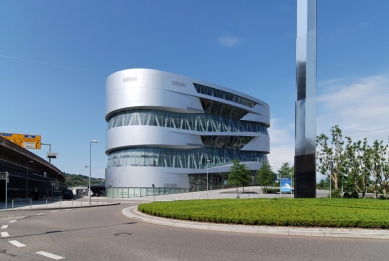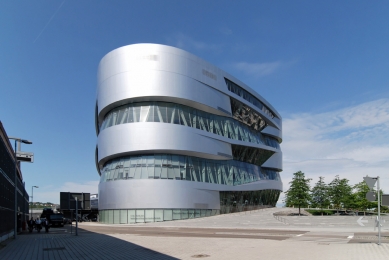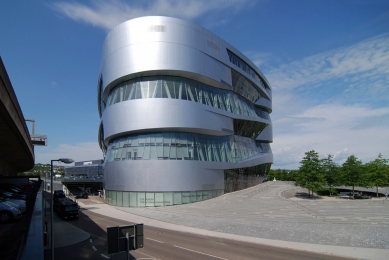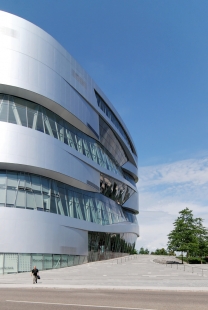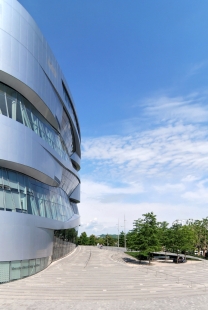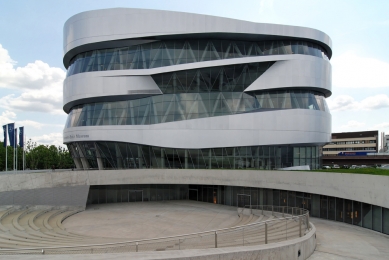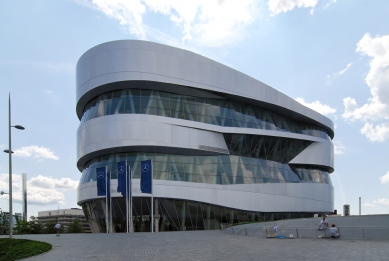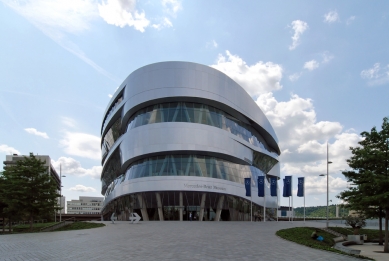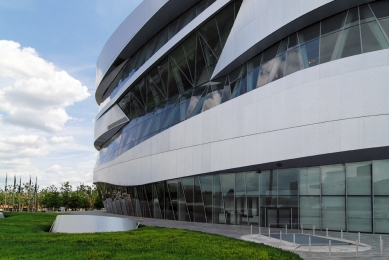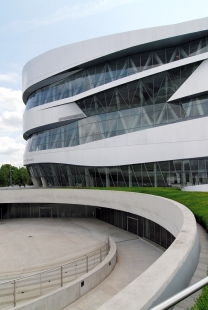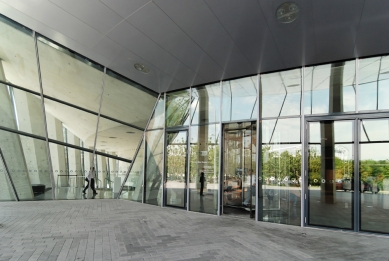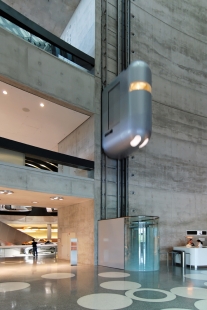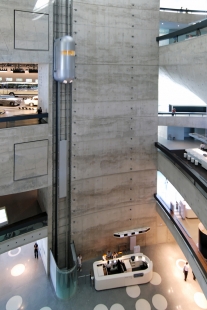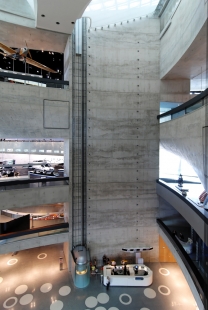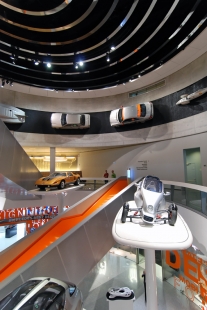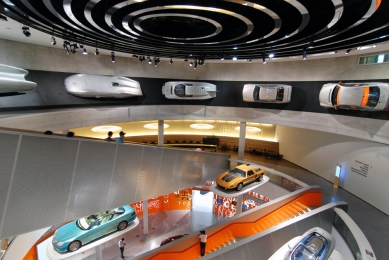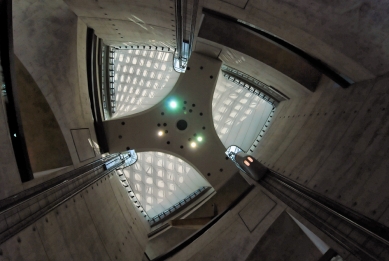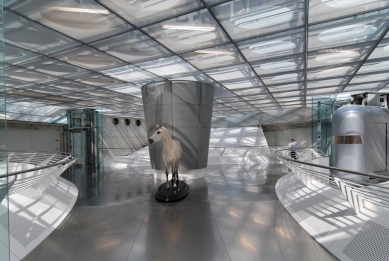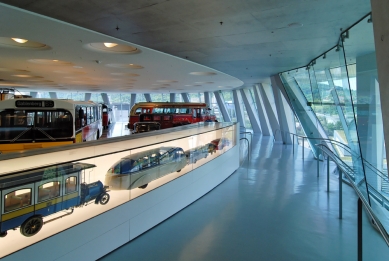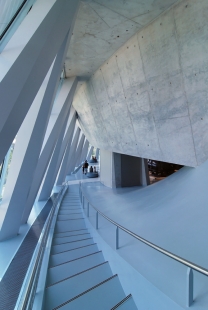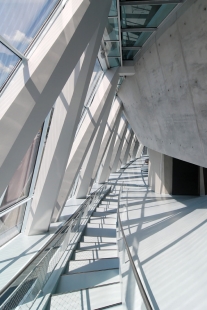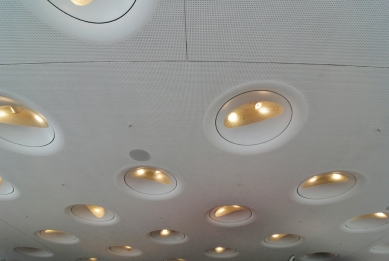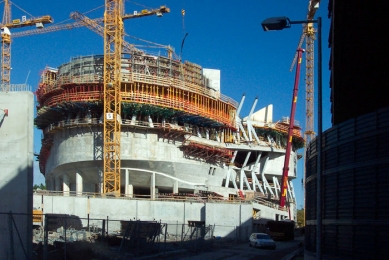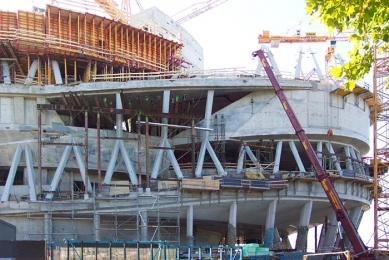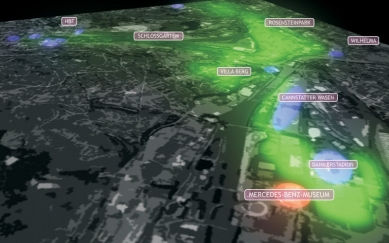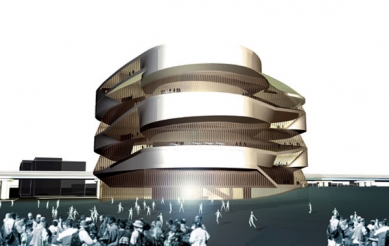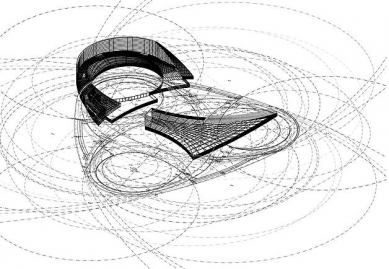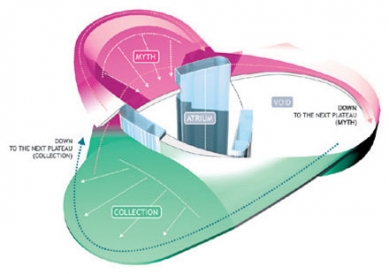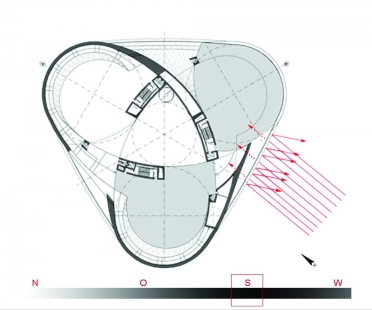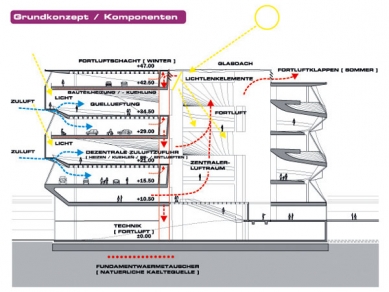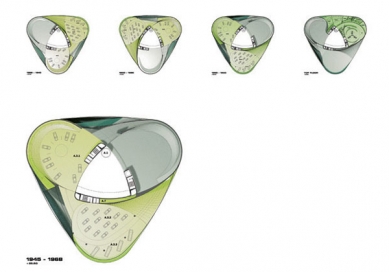
Mercedes Benz Museum

The structure of the Mercedes-Benz Museum is based on a trefoil. The cloverleaf structure mathematically consists of three overlapping circles, whose center has become an empty triangular atrium. Semi-circular floors swirl around the central atrium and create horizontal planes with alternately single and double ceiling heights.
It is spatially complex; you cannot see the trefoil from the museum. By using a distinctive design model, we were able to arrange the requirements for infrastructure, exhibition spaces, programs, and a supporting system. Moving from top to bottom, people progress through a chronologically organized exhibition. Visitors move along a path at the edge of the building like in a time machine. The line being followed, which transforms into a wall, then into a ceiling, and then into space, blurs the differences between line, surface, and mass.”
Ben van Berkel constructed a new temple for Mercedes-Benz cars on the outskirts of the Daimler Chrysler production site in the Stuttgart district of Untertürkheim, concurrently creating a milestone in computer architecture. Over four and a half years, the project went through fifty different modifications and a total of 35,000 drawings were produced.
Drivers traveling on the six-lane highway between the car factory and the Gottlieb Daimler Stadium must have the new museum instantly etched in their memory. In the last thirty years, this is the third building where Mercedes enthusiasts can reminisce about the brand’s history. The predecessor of the new museum was an architecturally significant building from 1961 by Rolf Gutbier and Hans Kammerer. Due to the increasing number of exhibits and visitors (half a million annually), the museum was expanded and reconstructed for its hundredth anniversary in 1986. At the turn of the millennium, a competition for a new museum was announced. The winners were the Amsterdam duo Ben van Berkel and Caroline Bos with a design of an organic form based on a trefoil footprint. The unusual concept based on an abstracted mathematical model of a double helix originated from a haphazard working model made of wire and cardboard, which, however, was constructed with the aid of progressive computer technologies. The builder accepted the challenge of the UN Studia project to prove his inventiveness not only in the field of automobiles.
The unusually shaped shell made of glass and matte aluminum is merely a response to the brilliant spatial concert unfolding inside. The sculpturally shaped exterior rests on the effort to create thorough, light-shaped interior spaces. Even the dark corners play their role in the design. Together with bright exhibition areas, introverted ramps, and staircases rich in views, they create a flowing architectural landscape from the interior.
Thanks to the statics expert Werner Sobek, the building is also unique from a structural standpoint. Around the
The installation of two intersecting exhibition paths was taken care of by the office HG Merz. Professor Merz was already responsible for the Mercedes exhibitions during the renovation of the former museum twenty years ago. This time he organized 1,500 exhibits and 170 different vehicles over an area of
1. helix - rooms dealing with the brand’s myth narrate its history and are divided into themes and periods. The spaces are also arranged chronologically and the entire exhibition is staged without artificial lighting.
1. myth: Pioneers - the invention of the car, 1886 - 1900
2. myth: Mercedes - the birth of the brand, 1900 - 1914
3. myth: Revolutions - the diesel engine and compressor, 1914 - 1945
4. myth: The Miracle Years - shape and diversity, 1945 - 1960
5. myth: Previous Thinkers - safety and environment, 1960 - 1982
6. myth: Moving the World - global and individual, from 1982 to the present
7. myth: The Silver Arrow - competitions and records
2. helix - spaces with collections of cars are arranged thematically. Here the visitor will discover cars that have a chunk of history behind them and sometimes they have even made that history themselves - for example, the Mercedes-Benz O 305 line bus, the famous “centipede” - heavy-duty truck LP 333, fire truck LF 3500 with a ladder-driven engine, or “papal car” of John Paul II.
1. collection: Gallery of Travel
2. collection: Gallery of Freight
3. collection: Gallery of Helpers
4. collection: Gallery of Names
5. collection: Gallery of Heroes
On the lowest floor, there is an exhibition called “Fascination with Technology,” which is not part of any of the tour routes. Visitors can observe the everyday life of Mercedes developers here, and entrance is free.
¹) contrapposto - a movement-balanced stance in which the weight of the body rests on one leg






